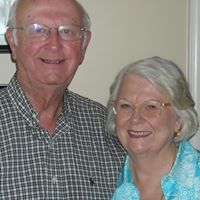James E Lipscomb
age ~50
from Gastonia, NC
- Also known as:
-
- James Emanuel Lipscomb
- Phone and address:
- 1104 W 7Th Ave, Gastonia, NC 28052
James Lipscomb Phones & Addresses
- 1104 W 7Th Ave, Gastonia, NC 28052
- 915 Nottingham Dr, Gastonia, NC 28054 • 7048665212
- Wilmington, DE
Education
-
School / High School:Ohio State University College Of Medicine and Public Health1977
Languages
English
Ranks
-
Certificate:Family Practice, 1980
Specialities
Family Medicine
Resumes

James Lipscomb
view source
James Lipscomb
view source
James Lipscomb
view source
President At X-Bar Diagnostic Systems, Inc.
view sourcePosition:
President at X-Bar Diagnostic Systems, Inc.
Location:
Greater Philadelphia Area
Industry:
Medical Devices
Work:
X-Bar Diagnostic Systems, Inc.
President
President

James Lipscomb
view sourceLocation:
United States

James Lipscomb
view sourceLocation:
United States
Medicine Doctors

Dr. James W Lipscomb - MD (Doctor of Medicine)
view sourceSpecialties:
Family Medicine
Certifications:
Family Practice, 1980
Languages:
English
Education:
Medical School
Ohio State University College Of Medicine and Public Health
Graduated: 1977
Medical School
Grant Med Center
Graduated: 1977
Medical School
Grant Med Center
Graduated: 1980
Ohio State University College Of Medicine and Public Health
Graduated: 1977
Medical School
Grant Med Center
Graduated: 1977
Medical School
Grant Med Center
Graduated: 1980
License Records
James Douglas Lipscomb
License #:
16462 - Active
Category:
Architect
Issued Date:
Mar 2, 1999
Expiration Date:
Jan 31, 2018
Organization:
Firm Not Published
James E Lipscomb
License #:
065348 - Active
Category:
Real Estate
Type:
Principal Broker
Us Patents
-
Method Of Detecting Fluid Flow Through A Conduit
view source -
US Patent:6604054, Aug 5, 2003
-
Filed:Feb 28, 2001
-
Appl. No.:09/794255
-
Inventors:James H. Lipscomb - Kennett Square PA
Larry Jurik - late of Elmhurst IL
Bernard Katz - Rockaway NJ
Michael J. Keating - Blairstown NJ
Stone Klengler - Escondido CA
John J. Kotlarik - Lake Geneva WI
Mieczyslaw Wroblewski - Lake Forest IL -
Assignee:Gen-Probe, Inc. - San Diego CA
-
International Classification:G01F 15075
-
US Classification:702 47, 7386142, 7386144, 138104, 324647, 417 63
-
Abstract:A sensor for detecting contact of a fluid delivery probe with a fluid surface and for detecting fluid flow through the probe includes a first electrode disposed along a fluid flow path of the probe upstream from a distal tip of the probe and a second electrode longitudinally spaced and electrically isolated from the first electrode and disposed at the distal tip of the probe. An oscillating signal is transmitted through the first electrode, and at least a portion of the signal is received through the second electrode. Through changes in the received signal due to the distal tip of the probe coming into contact with a fluid surface or due to fluid flow through the conduit between the first and second electrodes, fluid surface contact and fluid flow can be detected. A pressure sensor can be employed to monitor internal fluid pressure within the fluid conduit of the fluid delivery probe as a secondary, redundant mechanism for detecting fluid flow through the conduit.
-
Method Of Detecting Fluid Flow Through A Conduit
view source -
US Patent:6658946, Dec 9, 2003
-
Filed:Aug 8, 2002
-
Appl. No.:10/214161
-
Inventors:James H. Lipscomb - Kennett Square PA
Larry Jurik - late of Elmhurst IL
Bernard Katz - Rockaway NJ
Michael J. Keating - Blairstown NJ
Stone Klengler - Escondido CA
John J. Kotlarik - Lake Geneva WI
Mieczyslaw Wroblewski - Lake Forest IL -
Assignee:Gen-Probe Incorporated - San Diego CA
-
International Classification:G01F 2202
-
US Classification:7386142, 7386144, 702 47
-
Abstract:A sensor for detecting contact of a fluid delivery probe with a fluid surface and for detecting fluid flow through the probe includes a first electrode disposed along a fluid flow path of the probe upstream from a distal tip of the probe and a second electrode longitudinally spaced and electrically isolated from the first electrode and disposed at the distal tip of the probe. An oscillating signal is transmitted through the first electrode, and at least a portion of the signal is received through the second electrode. Through changes in the received signal due to the distal tip of the probe coming into contact with a fluid surface or due to fluid flow through the conduit between the first and second electrodes, fluid surface contact and fluid flow can be detected. A pressure sensor can be employed to monitor internal fluid pressure within the fluid conduit of the fluid delivery probe as a secondary, redundant device for detecting fluid flow through the conduit.
-
Fluid Transfer System
view source -
US Patent:6663353, Dec 16, 2003
-
Filed:Aug 8, 2002
-
Appl. No.:10/214158
-
Inventors:James H. Lipscomb - Kennett Square PA
Larry Jurik - late of Elmhurst IL
Bernard Katz - Rockaway NJ
Michael J. Keating - Blairstown NJ
Stone Klengler - Escondido CA
John J. Kotlarik - Lake Geneva WI
Mieczyslaw Wroblewski - Lake Forest IL -
Assignee:Gen-Probe Incorporated - San Diego CA
-
International Classification:G01F 2202
-
US Classification:417 63, 7386422, 7386425
-
Abstract:A sensor for detecting contact of a fluid delivery probe with a fluid surface and for detecting fluid flow through the probe includes a first electrode disposed along a fluid flow path of the probe upstream from a distal tip of the probe and a second electrode longitudinally spaced and electrically isolated from the first electrode and disposed at the distal tip of the probe. An oscillating signal is transmitted through the first electrode, and at least a portion of the signal is received through the second electrode. Through changes in the received signal due to the distal tip of the probe coming into contact with a fluid surface or due to fluid flow through the conduit between the first and second electrodes, fluid surface contact and fluid flow can be detected. A pressure sensor can be employed to monitor internal fluid pressure within the fluid conduit of the fluid delivery probe as a secondary, redundant mechanism for detecting fluid flow through the conduit.
-
Fluid Dispense Verification System
view source -
US Patent:6851453, Feb 8, 2005
-
Filed:Apr 30, 2003
-
Appl. No.:10/425615
-
Inventors:James H. Lipscomb - Kennett Square PA, US
Anna Jurik - Elmhurst IL, US
Bernard Katz - Rockaway NJ, US
Michael J. Keating - Blairstown NJ, US
Stone Klengler - Escondido CA, US
John J. Kotlarik - Lake Geneva WI, US
Mieczyslaw Wroblewski - Lake Forest IL, US -
Assignee:Gen-Probe Incorporated - San Diego CA
-
International Classification:F16L055/00
F16L009/22
G01F001/56
B01L003/02 -
US Classification:138104, 137557, 138177, 7386473, 7386425, 324647
-
Abstract:A sensor for detecting contact of a fluid delivery probe with a fluid surface and for detecting fluid flow through the probe includes a first electrode disposed along a fluid flow path of the probe upstream from a distal tip of the probe and a second electrode longitudinally spaced and electrically isolated from the first electrode and disposed at the distal tip of the probe. An oscillating signal is transmitted through the first electrode, and at least a portion of the signal is received through the second electrode. Through changes in the received signal due to the distal tip of the probe coming into contact with a fluid surface or due to fluid flow through the conduit between the first and second electrodes, fluid surface contact and fluid flow can be detected. A pressure sensor can be employed to monitor internal fluid pressure within the fluid conduit of the fluid delivery probe as a secondary, redundant mechanism for detecting fluid flow through the conduit.
-
Method Of Detecting A Fluid Surface
view source -
US Patent:6914555, Jul 5, 2005
-
Filed:May 1, 2003
-
Appl. No.:10/426655
-
Inventors:James H. Lipscomb - Kennett Square PA, US
Anna Jurik - Elmhurst IL, US
Bernard Katz - Rockaway NJ, US
Michael J. Keating - Blairstown NJ, US
Stone Klengler - Escondido CA, US
John J. Kotlarik - Lake Geneva WI, US
Mieczyslaw Wroblewski - Lake Forest IL, US -
Assignee:Gen-Probe Incorporated - San Diego CA
-
International Classification:G01F023/284
-
US Classification:342124, 324647, 73290 R
-
Abstract:A sensor for detecting contact of a fluid delivery probe with a fluid surface and for detecting fluid flow through the probe includes a first electrode disposed along a fluid flow path of the probe upstream from a distal tip of the probe and a second electrode longitudinally spaced and electrically isolated from the first electrode and disposed at the distal tip of the probe. An oscillating signal is transmitted through the first electrode, and at least a portion of the signal is received through the second electrode. Through changes in the received signal due to the distal tip of the probe coming into contact with a fluid surface or due to fluid flow through the conduit between the first and second electrodes, fluid surface contact and fluid flow can be detected. A pressure sensor can be employed to monitor internal fluid pressure within the fluid conduit of the fluid delivery probe as a secondary, redundant mechanism for detecting fluid flow through the conduit.
-
Fully Automated Portable Dna Detection System
view source -
US Patent:8524490, Sep 3, 2013
-
Filed:Sep 16, 2009
-
Appl. No.:12/561092
-
Inventors:James H. Lipscomb - Kennett Square PA, US
Peter Blacklin - Columbia MD, US
Michael Keating - Hardwick NJ, US
Robert Bernstine - Chesapeake City MD, US
Richard Raffauf, Jr. - Reading PA, US -
Assignee:X-Bar Diagnostic Systems, Inc. - Kennett Square PA
-
International Classification:C12M 1/00
C12M 1/36
C12M 1/38 -
US Classification:4353031, 4352862, 4352872, 4352873, 435809
-
Abstract:Provided herein is a portable thermocycler, comprising: (i) a case; (ii) a rotary plate in the case; (iii) a plurality of heating blocks arranged in a geometric pattern disposed on the rotary plate; and (iv) at least one vessel adapted to move and contact at least two of the plurality of heating blocks; wherein each of the heating blocks comprises a heating plate maintained at a set temperature over a thermally insulating material; wherein the geometric pattern comprises a number of center heating blocks arranged in a shape defining a polygon and a number of outside heating blocks disposed around the periphery of the rotary plate; and wherein the rotary plate includes a plurality of rotating wheels adapted to rotate at least one of the vessels into contact with each of the heating blocks.
-
Multi-Linear Automatic Apparatus For Processing Immunoassays
view source -
US Patent:52326659, Aug 3, 1993
-
Filed:Jul 26, 1991
-
Appl. No.:7/736157
-
Inventors:Robert A. Burkovich - Newark DE
James H. Lipscomb - Kennett Square PA
Colin A. Nurse - Newark DE
Kin W. Wong - Claymont DE
Paul J. Zuk - Lincoln University PA
Robert E. Bernstine - Chesapeake City MD -
Assignee:E. I. Du Pont de Nemours and Company - Wilmington DE
-
International Classification:G01N 3300
C12M 100
C12M 140 -
US Classification:422 65
-
Abstract:The apparatus processes immunoassays of samples using a solid support. It provides a compact system using rectilinear motion to process carriers holding samples on a real time basis while permitting the input and output of the system to operate on a random basis.
-
Closed And Open Tube Sampling Apparatus
view source -
US Patent:52169260, Jun 8, 1993
-
Filed:Aug 5, 1992
-
Appl. No.:7/924636
-
Inventors:James H. Lipscomb - Wilmington DE
-
Assignee:E. I. Du Pont de Nemours and Company - Wilmington DE
-
International Classification:G01N 3506
-
US Classification:7386425
-
Abstract:An automatic sampling apparatus is constructed to use bang-bang fluid driven actuators whose control system is modified to permit accurate positioning over its range of motion. The actuators are positioned to aspirate liquid contents held within stoppered sample containers and equilibrate pressure in the sample containers to atmospheric prior to aspiration.
Isbn (Books And Publications)

Structuring Complex Real Estate Transactions: Law, Procedures, Forms, 1994 Cumulative Supplement
view sourceAuthor
James L. Lipscomb
ISBN #
0471033278

Structuring Complex Real Estate Transactions: Law, Procedure, Forms, 1990 Supplement
view sourceAuthor
James L. Lipscomb
ISBN #
0471525944

Structuring Complex Real Estate Transactions: Law, Procedure, Forms 1991 Cumulative Supplement
view sourceAuthor
James L. Lipscomb
ISBN #
0471540668

Structuring Complex Real Estate Transactions: Law, Procedure, Forms
view sourceAuthor
James L. Lipscomb
ISBN #
0471847135

Commercial Real Estate Lending Innovative Financing Strategies
view sourceAuthor
James L. Lipscomb
ISBN #
0897078101


Name / Title
Company / Classification
Phones & Addresses
President, Chief Executive Officer
X-Bar Diagnostics Systems, Inc
Mfg Measuring/Controlling Devices
Mfg Measuring/Controlling Devices
77 Deer Path, Kennett Sq, PA 19348
6103882071
6103882071
Governing Person
Craig Crossing-Lipscomb, LLC
Classmates

James Lipscomb
view sourceSchools:
Byrnes High School Duncan SC 1984-1988

James Lipscomb
view sourceSchools:
Terrell Christian Academy Terrell TX 1998-2002
Community:
Hugh Mantooth

James Lipscomb
view sourceSchools:
Mojave High School North Las Vegas NV 1999-2003
Community:
Patrick Breeden

James Lipscomb
view sourceSchools:
Central High School Carrollton GA 1983-1987
Community:
Tina Harper

James Lipscomb (Rogers)
view sourceSchools:
Wadley High School Wadley AL 1981-1998
Community:
Hughey Reynolds, Jim Orr, Joanne Richardson, Beth Windsor, Vickie Alsabrook, John Windsor

James Lipscomb
view sourceSchools:
Clayton High School Clayton NC 1984-1988
Community:
Vanessa Hopson, Paige Jones, Jan Evans, Julie Jones, Katedra Dixon, Wendy Honeycutt, Heidi Mosloskie, Mike Smith, Anthony Ray, Jeffrey Harris, Ryan Wall

Whitfield High School, St...
view sourceGraduates:
Robert Horwitz (1960-1964),
William Shaw (1954-1958),
Michelle Downs (1996-2000),
William Lowenstein (1997-2001),
James Lipscomb (1966-1970)
William Shaw (1954-1958),
Michelle Downs (1996-2000),
William Lowenstein (1997-2001),
James Lipscomb (1966-1970)

Terrell Christian Academy...
view sourceGraduates:
James Lipscomb (1998-2002),
April Finch (1993-1995),
Lauren Pasierb (1994-1995),
Katherine Holt (1999-2003),
Monica Wilson (1993-1997)
April Finch (1993-1995),
Lauren Pasierb (1994-1995),
Katherine Holt (1999-2003),
Monica Wilson (1993-1997)
Myspace

James Lipscomb (jimmy ) ...
view sourceJames Lipscomb (jimmy )'s profile on Myspace, the leading social entertainment destination powered by the passion of our fans.
Googleplus

James Lipscomb
Relationship:
Single

James Lipscomb

James Lipscomb

James Lipscomb

James Lipscomb

James Lipscomb

James Lipscomb

James Lipscomb

James Lipscomb
view source
James Lipscomb
view source
James Lipscomb
view source
James Youngmoney Lipscomb
view source
James Lipscomb
view source
James Walton Lipscomb
view source
James Lipscomb II
view source
Michael James Lipscomb
view sourceYoutube
News

This Week's Boston Deal Sheet (April 4, 2024)
view source- than half of the space at the 215K SF industrial and flex building. The facility is part ofDavis' 37-acre, five-building Upton Crossing campus. JLL's Joe Fabiano, James Lipscomb, Jordan Yarboro and Brian Tisbert represented Davis, and JLL'sRachel Marks and Chelsea Andre represented the tenant.
- Date: Apr 01, 2024
- Category: Your local news
- Source: Google

Epic SCV-Made Film Added to National Registry
view source- including D. A. Pennebaker, Richard Leacock, Gregory Shuker, James Lipscomb, and Patricia Powell, to capture on film the dramatic unfolding of an ideological crisis, one that revealed political decision-making at the highest levels. The result, Crisis: Behind a Presidential Commitment, focuses on Gov. Geo
- Date: Dec 28, 2011
- Category: Entertainment
- Source: Google

The four things horror movie remakes get wrong
view source- "Blue Water, White Death" (1971): Predating "Great White Death" by over a decade and "Jaws" by four years, this intensely cinematic documentary by Peter Gimbel and James Lipscomb could be considered the granddaddy of little Shark Week.
- Date: Aug 17, 2011
- Category: Entertainment
- Source: Google
Get Report for James E Lipscomb from Gastonia, NC, age ~50












